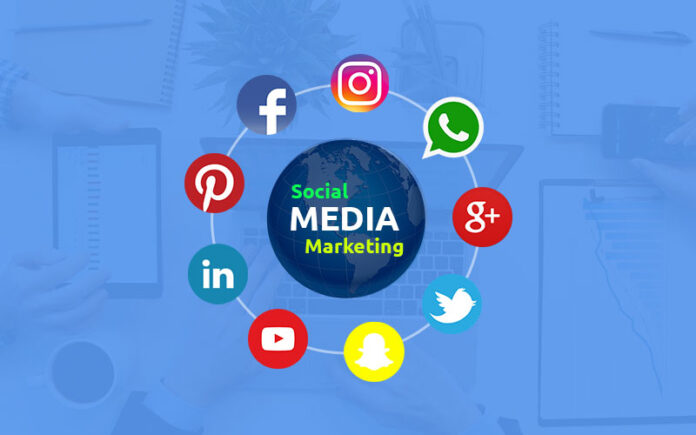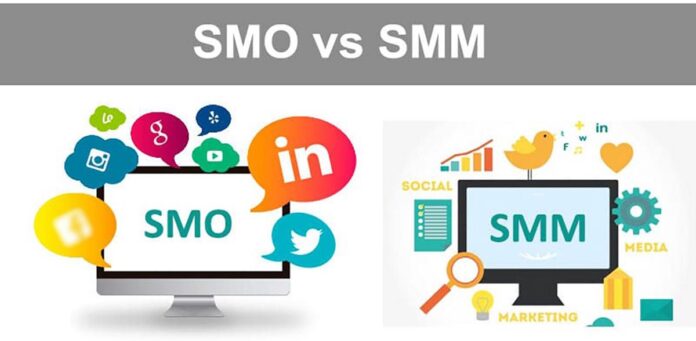
Social media marketing (SMM) and social media optimization (SMO) are two terms that are often used interchangeably, but there are key differences between the two. SMM is all about promoting your brand or product on social media platforms, while SMO is about optimizing your social media presence to drive more traffic to your website. So, which one should you be focusing on for your business? The answer may surprise you. In this blog post, we’ll explore the key differences between these two so that you can make an informed decision about which one is right for your business.
What is SMM?

As the world becomes more and more digital, businesses are realizing the importance of a strong online presence. One of the most effective ways to boost your online presence and reach new customers is through social media marketing (SMM).
This is the process of using SM platforms to promote your business or product. This can be done in a variety of ways, such as creating engaging content, running ads, or hosting competitions.
SMM is a great way to connect with potential customers who may not be aware of your business otherwise. It’s also an effective way to build brand awareness and trust.
However, it’s important to note that SMM is different from SMO. SMO is about improving your visibility on platforms, whereas SMM is about actively promoting your business on these platforms.
Both SMM and SMO are important for businesses looking to succeed online. However, it’s important to understand the key differences between the two before deciding which approach is best for you.
What is SMO?

Social media optimization (SMO) is the process of optimizing a website for social media interaction. It can be used to improve the visibility of a website or page on social media platforms such as Facebook, Twitter, and LinkedIn.
The main aim of SMO is to generate traffic from SM platforms. In order to do this, it uses techniques such as adding buttons and links on a website, creating content that is shareable on social media, and using relevant keywords in titles and descriptions.
It can be an effective way to improve the reach of a website or page on social media. By making it easier for users to share content on platforms, SMO can help to increase the number of people who see it. In turn, this can lead to more traffic and higher search engine rankings.
Key Differences Between SMM and SMO

SMM and SMO are two of the most commonly used terms in the world of digital marketing. However, there is often a lot of confusion surrounding these terms, with many people unsure of what the difference is between them.
In short, SMM refers to the process of promoting a brand or product on social media platforms, while SMO refers to the process of optimizing a social media platform for better visibility and engagement.
Both SMM and SMO are important elements of any successful digital marketing strategy, but there are some key differences between them that you should be aware of. Let’s take a closer look at some of the key differences between SMM and SMO:
- SMM is all about promotion, while SMO is about optimization.
- SMM focuses on driving traffic to a website or landing page, while SMO focuses on improving the visibility and engagement of a social media platform.
- SMM is typically paid for, while SMO is usually free.
- SMM generally has shorter-term goals, while SMO often has longer-term goals.
How to Use SMM and SMO Together for the Best Results?

If you want to get the most out of SMM and SMO, it’s important to use them together. Both SMM and SMO can help you reach a larger audience, engage with potential and current customers, and promote your brand.
When used together, SMM and SMO can be a powerful tool for businesses of all sizes. Here’s a look at how to use SMM and SMO together for the best results:
- Use social media to create valuable content. The first step is to create content that is valuable to your target audience. This could include blog posts, infographics, images, videos, or anything else that would be of interest to your audience. Once you have this valuable content, you can share it across your social media channels.
- Optimize your content for social media. When you share your content on social media, be sure to optimize it for each platform. This means using the right keywords and hashtags, as well as creating eye-catching visuals. By optimizing your content, you’ll make it more likely that people will see and engage with it.
- Engage with your audience on social media. Once you have valuable content to share, make sure you’re engaging with your audience on social media. Respond to comments and questions, start conversations, and build relationships with potential and current customers. The more you engage with your audience, the more likely they are to become customers.
- Use social media advertising. Social media advertising is a great way to reach a larger audience and promote your brand. When used together with SMM and SMO, social media advertising can be an effective way to boost your business.
- Measure your results. Finally, it’s important to measure your results so you can see what’s working and what isn’t. Track your social media metrics, such as engagement, reach, and clicks. By measuring your results, you can adjust your strategy and ensure that you’re getting the most out of social media marketing.
End-Up
In conclusion, social media marketing (SMM) and social media optimization (SMO) are two separate but equally important strategies that should be employed in any comprehensive social media plan. SMM focuses on creating content that will generate engagement and interest, while SMO focuses on optimizing that content to ensure it is seen by as many people as possible. Both strategies are necessary to ensure success on social media.








